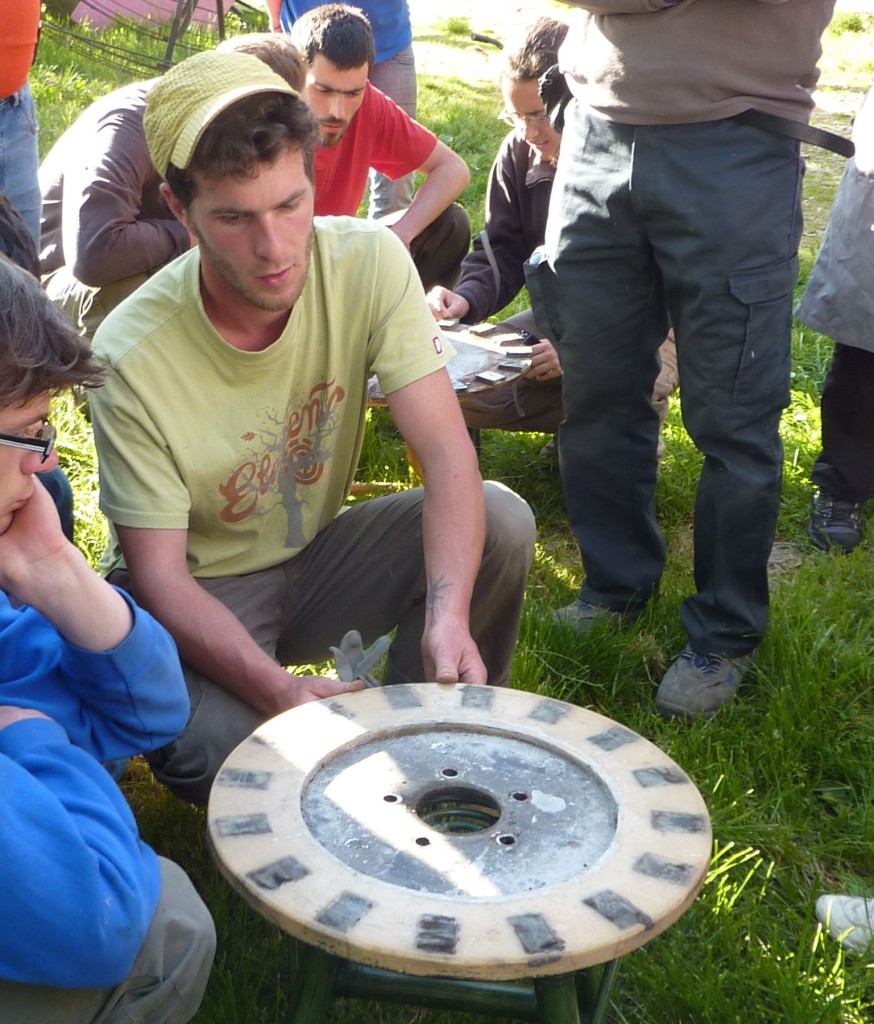 Gilou at Tieole writes from France:
Gilou at Tieole writes from France:
This year, we are confronted with a lot of violent wind. And the 4200 model break a lot.
This winter, I think 8 wind turbines are broken. A lot of tails have jump and break blades.
Recall you the wind turbine we have built at L’ile on May. It’s broken but it’s really incredible. Blades, stator are broken and the top of the tower is folded.
I have use a 76 mm hydraulic pipe for the top of the tower.
It’s good to share pictures like this because damage does happen. The hard thing is to find out what went wrong first, because most of the damage probably happened after the first failure. For example when a tail jumps off this most often happens as a result of a broken blade ( being out of balance, the machine shakes the tail off), but it’s also possible that the tail broke the blade somehow.
When I look at the bent yaw pipe I think that’s most likely to be the first failure. But the most likely reason for the pipe to bend would be gyroscopic forces so I suspect that there were strong gusts of wind and maybe the machine was also over-speeding at the time. Then if the blades are spinning fast and the machine suddenly yaws away from the wind in a gust you could see a failure of the yaw pipe like that. After that it’s easy to explain the blades and tail failing. I suppose that the damage to the stator was caused by the blades. But we don’t really know if the whole thing started with the stator coming loose, breaking, then overspeed, then bent yaw…
It’s important to analyse every clue to try to find out the original cause of the crash. How to prevent it in future?
- We can build the machine with stronger materials. For example the 76 mm pipe maybe only had 3 mm wall. You can also buy it with 5 mm wall and a higher grade of steel. This is a good idea for surviving exceptional winds and turbulent sites.
- Another idea is to run the machine more gently. Use a smaller angle on the tail hinge pipe so that it furls more easily and does not run so hard. Or modify the power curve in the inverter so as to run at lower rpms. (You may also get less energy of course.)
The 4200 is designed as a low windspeed machine with large blades in relation to the alternator and frame. The idea is to get maximum power in low winds so it works for us every day. But it’s not the strongest survivor in storms as we have learned from the winter experience in France.
Comet-me build 4.2m machines using a design they have adapted from my recipes. They put them on some very windy sites! Maybe we can learn from their designs… Noam has sent me a document and I am pasting a link to it below. But the yaw pipe is only 73mm in these drawings.

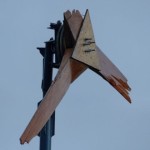
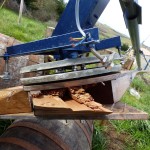
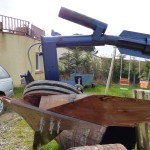
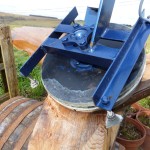
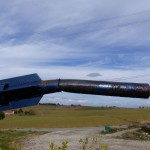

Thanks Hugh,
Yes, I think a bolt on mechanical stop to stop the tail lifting, is a better permanent arrangement than my bronze/ stainless steel woven cord.
Best
Leslie
My modification for jumping tails.
http://www.fieldlines.com/index.php/topic,149176.0.html
I trust this helps.
Leslie Bryan
Hi Leslie,
I have tried a number of methods over the years to prevent the tail flying off. Mostly they wear out after a few years. It’s such a rare thing to happen that I don’t tend to be as persistent and diligent as I maybe ought to be. When it does happen, of course, it often hurts! But mostly I forget about it to be honest as it is so rare.
Here’s one that is simple and robust. I like it because there are no moving parts to wear out or fatigue or whatever and also it does not allow water to enter the tail bearing and wash out the grease. It’s just a shaped piece of flat bar bolted to the yaw cap such that it acts as a stop to any rising motion of the tail hinge. There is a small gap between the stop and the top of the tail hinge so there is no contact or wear in normal operation.
cheers
Hugh